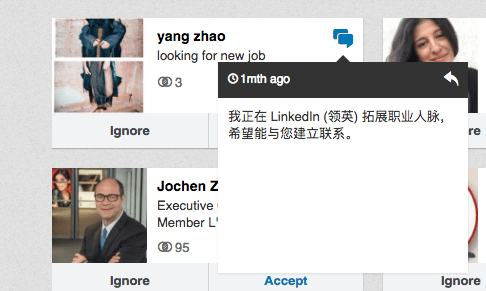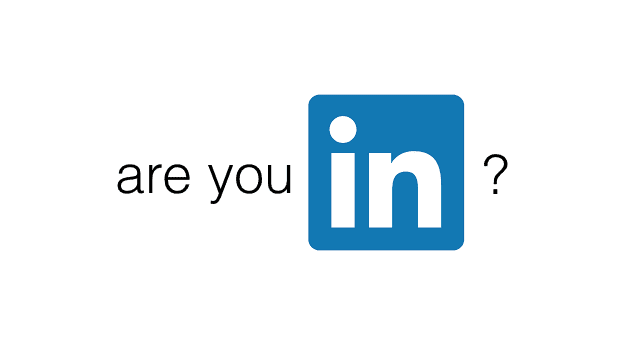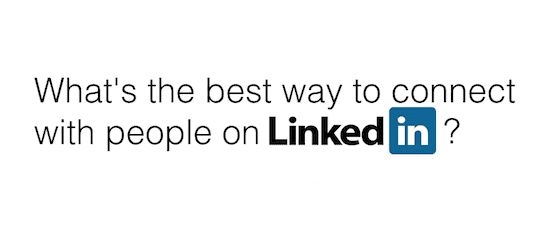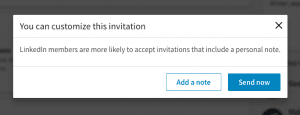Have you ever wanted to connect with someone on LinkedIn but weren’t sure how best to get that person to accept your invitation? For sure, even if that person is a 2nd degree connection (ie. a friend of a friend), the wrong answer is just to hit the CONNECT button and SEND.
 But, just like sending out unsolicited, impersonal and unsigned emails is pure evil spam, that lazy CONNECT option is the bane of our LinkedIn notification inbox. Way too many people seem to follow that path. If you’re known and trusted by that individual, one could accept the shortcut. But for the rest of us, there’s more to it than that.
But, just like sending out unsolicited, impersonal and unsigned emails is pure evil spam, that lazy CONNECT option is the bane of our LinkedIn notification inbox. Way too many people seem to follow that path. If you’re known and trusted by that individual, one could accept the shortcut. But for the rest of us, there’s more to it than that.
 Guide to connecting to people on LinkedIn
Guide to connecting to people on LinkedIn
This post addresses some of the best practices for connecting with people on Linkedin. If LinkedIn changes its interface from time to time, the basic principles (i.e. mindset) should not change. The following, therefore, are the basic guidelines for why, who and how to connect with people on Linkedin. At the end, I also have a list of things NOT to do. My guiding North for all social networks remains:
You are only as good as your network. #socialmedia Share on X
Why LinkedIn?
This is not as obvious as it might seem. Linkedin has the particularity of being focused on business. So, for example, just because you socialize with someone doesn’t make them a natural Linkedin connection. If people used to say it’s the “Facebook of Work,” it has indeed become much more suited to that moniker than before, given the ability to post and engage within the platform. In fact, scrolling down the Linkedin stream has become a useful and efficient way to get updated with goings on. But, by just being an observer, you probably won’t get as much out of Linkedin as if you intend to actively participate. Like so many of these social network platforms, you get out of it what you put in. Share on X
Who to connect with?
As a rule of thumb, I only connect with people that I know or with whom there is a concrete project on hand. Only in very rare cases will I use LinkedIn to make new connections with people I don’t know. In all cases, the question I ask myself is: If this person were to ask me to do a favour for them, would I be willing? Share on X
The second rule of thumb is that I connect with people on LinkedIn (as opposed to other platforms) to be able to carve out more business-oriented conversations. It’s not uncommon to have young adults (example kids of friends, university students) now want to connect with me.
How to connect?
LinkedIn made some very useful improvements recently to its connection request proposition by adding a pop up that asks if you would like to add a note to the invitee. LinkedIn is right to suggest that people are more likely to accept with a note. Even when I know the person well, I will generally add a cordial note. Think of it as if you were exchanging business cards!
Where the note becomes absolutely mandatory is when you don’t know each other particularly well or have not been in touch for a while. In your note, you need to provide some context, perhaps remind them how/when you met. And, if the connection request — where you don’t need an introduction — is to someone you don’t directly know or have never met, then your note had better be well crafted. You only have 300 characters (equivalent to two full tweets!), so make it engaging and to the point. Remember to add: What is the purpose of the connection request and/or what is the benefit for the person on the other side? Share on X
Whose connection requests to accept?
For me, new LinkedIn requests to connect come in daily. Many are just absolutely irrelevant, like the one below. It comes in with a formula that the local LinkedIn office has created, in this case in Chinese!

Wrong in so many ways!
I believe that as your network grows on LinkedIn, so your responsibility to be more careful grows. Yet, I have followed the same principle from the beginning: only accept connection requests from people with whom I have done work and have a level of trust. Over the years, I have met many people. In this context, there are two important aspects I take into account when I don’t immediately recognize the name of the incoming request: has my memory failed me, and how might this connection be of mutual interest? As a result, I don’t just ignore out of hand. I typically write back with some phrasing that looks like this:
Hello XXX, I have seen your request for a connection. Unless I’m mistaken, I don’t believe we have met. As a rule I don’t connect with someone whom I have not met or have a project on which to work. What spurred the request? I would be glad to know how I might be of assistance… Best regards, Minter
What not to do?
- Don’t wait to build your network until you’re about to change jobs (or worse about to be let go) to start connecting with people.
- Never connect with or accept someone you don’t trust.
- Don’t generally accept a request from someone you don’t know.
- Don’t connect with someone who has a poor profile (e.g. no photo) and/or very few contacts.
- Don’t be a passive observer — like and/or comment on your contacts’ status updates and posts.
- Don’t introduce a contact to someone else within your network without firmly understanding the intent of the connection.
- Don’t let your own profile get out of date — keep it fresh, including the image. See here for some great tips from Cision on how to optimise your profile.
Happy to have your comments and reactions!


 Guide to connecting to people on LinkedIn
Guide to connecting to people on LinkedIn










Thank you for this post. I have linked to it in a post I wrote for LinkedIn this month.
:
Great information! I still don’t get why random people try to add you to their network, even though they are total strangers
Those requests are essentially spam!!